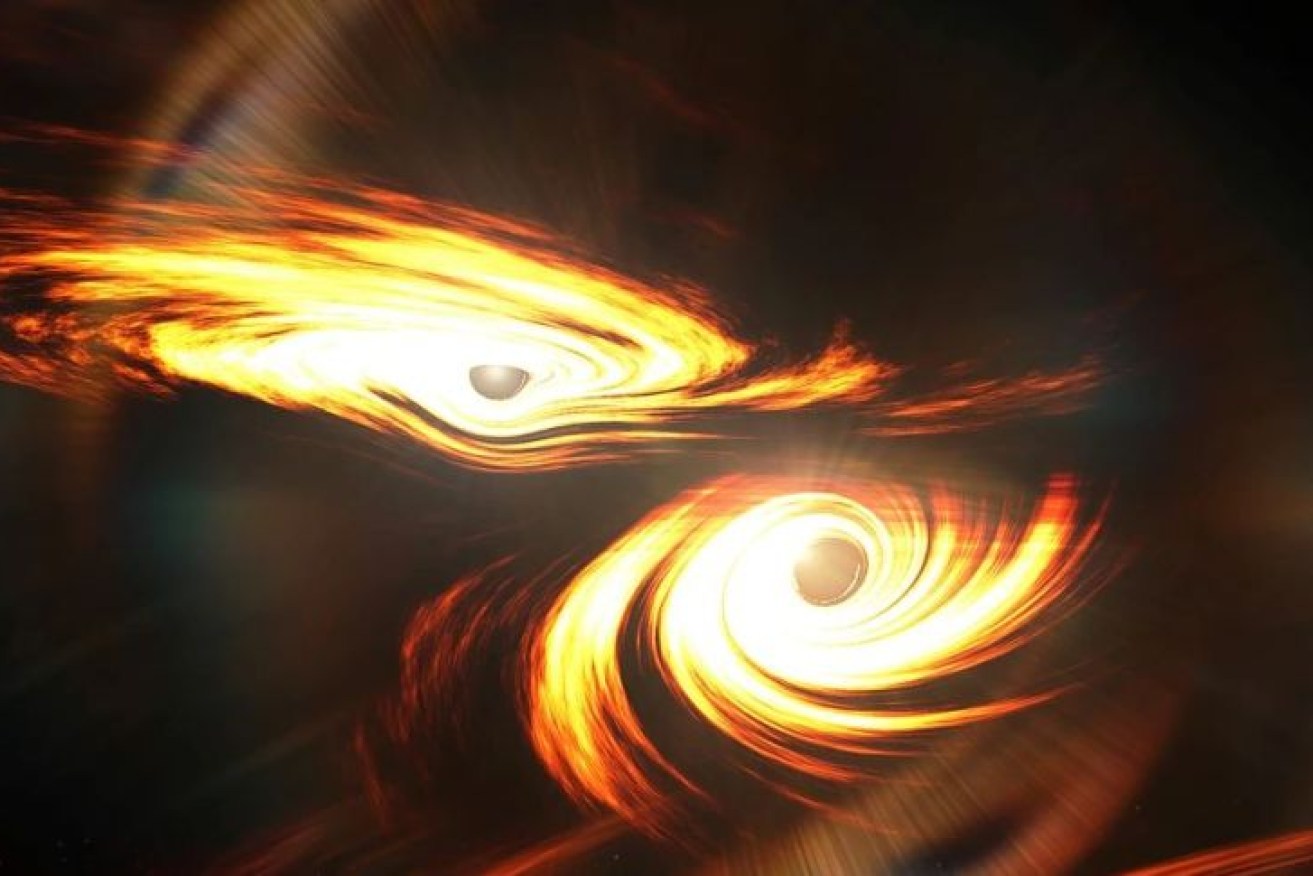‘Impossible’ black hole causes biggest collision ever detected by gravitational waves

At least one of the colliding black holes was in the ‘forbidden range’ and should not exist. Photo: Mark Myers/OzGrav
When the universe was half the age it is now – around 7 billion years ago – two massive black holes crashed together.
This collision created a monster black hole almost 150 times the mass of our Sun.
The ripples it caused in the fabric of space-time reached Earth in May last year.
GW190521, as the colossal event has been named, is the most massive black hole collision we’ve ever directly detected.
And it’s very different from previous black hole collisions picked up by the LIGO and Virgo gravitational wave detectors since 2015.
“This detection was really special because we got a few firsts that we hadn’t known about before,” said ANU’s Susan Scott, chief investigator of the ARC Centre of Excellence for Gravitational Wave Discovery (OzGrav).
Instead of the tell-tale “chirp” of two black holes spiralling in towards each other, the sensitive instruments captured just a blip in the moment before the holes collided.
The newly formed black hole is almost twice the mass of previous discoveries, putting it into the intermediate-mass range.
Black holes of this type fall in between smaller black holes (created by the collapse of stars) and the supermassive black holes that lurk at the centre of galaxies.
But astronomers have never actually spotted an intermediate-mass black hole before.
“This is the first ever observation by anyone of such a black hole, and it’s not just an observation: we actually saw how this one formed,” Professor Scott said.
The event is also special because at least one of the original black holes shouldn’t have existed at all, said Isobel Romero-Shaw, a PhD candidate at Monash University who was also involved in the discovery.
“At least one of the black holes was a lot more massive than we thought was possible from the way we think that stars evolve and die,” Ms Romero-Shaw said.
Impossible black hole in ‘the forbidden range’
When stars between five and 65 times the mass of our Sun explode, they collapse to form black holes.
While one of the original black holes was around 66 times the mass of the Sun, the other was around 85, according to calculations published on Wednesday in two papers, in Physical Review Letters and Astrophysical Journal Letters.
The smaller black hole is right on the edge of the plausible range of an object created by the collapse of a star.
But the larger of the two original black holes is squarely in what astrophysicists call “the forbidden range”.
“This is our first example of a black hole in that forbidden range,” Professor Scott said.
According to current theories of star evolution, large stars between 65 and 135 times the mass of the Sun become unstable and blow up into smithereens leaving nothing behind.
“We call this the expected upper-mass black hole gap because we don’t expect black holes to form from stellar collapse in that range,” Professor Scott said.
How could a black hole form in the forbidden range?
The leading hypothesis is that black holes that fall in this range may be created by a series of smaller black hole mergers, in just the same way as the new, hefty intermediate-mass black hole was created, Ms Romero-Shaw said.
“They merge again and again and again until you get something that’s somewhere in between the masses of the Sun and the supermassive black hole that’s in the centre of the galaxy.”
Another “more exotic” hypothesis is that they formed from primordial black holes from the early universe.
Back then there was a lot of dense material clumping together so it might have been possible for a black hole to form without having been a star in the first place.
“The environment in the early universe is very different to what we’re used to,” Ms Romero-Shaw said.
But, she added, this hypothesis would be much harder to prove.
How did these two black holes meet?
The new discovery also raises questions about how these two black holes found each other in the first place.
“One of the options you have for creating binary black holes, that then go on to merge, is you have two stars that are born together, evolve together and die together and then merge as black holes later on,” Ms Romero-Shaw said.
But this is an unlikely explanation in this case, she explained, because the original masses of these two black holes do not match anything we know about the evolutionary path of stars.
So could these black holes have just met up in space?
“What it could mean is that these black holes are actually evolving on their own, and then meeting up later on in some really dense region of space like a galactic centre or a globular cluster [of stars].”

This artist’s concept illustrates a hierarchical scheme for the merging black holes of GW190521. Image: LIGO/Caltech/MIT/R. Hurt (IPAC)
After the gravitational wave detectors picked up the signal from the collision, scientists using Caltech’s Zwicky Transient Facility spotted a light flare in a surrounding patch of sky.
It is unclear whether or not the two events were related.
“We’ve never had any other signal from two black holes colliding [other than gravitational waves] so it would have to be a very special situation in which you’d get a light signal from black holes,” Professor Scott said.
But, she said, there was a possibility that energy from the collision could have kicked the new black hole through the gas ring surrounding a nearby supermassive black hole, causing it to light up.
“It’s not likely it came from our collision but it’s still an interesting possibility and it does look ahead to what we can do in the future,” she said.
Each new gravitational wave discovery is exciting, Ms Romero-Shaw said.
“Every time we detect a gravitational wave it shows us something we couldn’t possibly have seen with normal telescopes.”
–ABC








